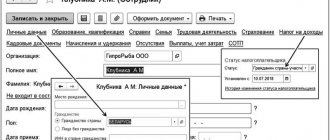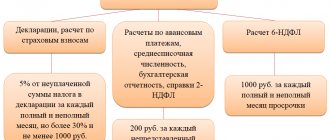Federal taxes and fees in the Russian Federation Taxes existed in Rus'.
Gradually, taxation underwent changes, as a result of which federal and regional taxes, as well as local ones, were allocated to a separate group. Regional and local payments to Russian citizens are known to a greater extent than federal ones, which will be discussed further.
What are federal taxes and what is their role in Russia
Federal taxes are a separate part of the entire tax system, which operates throughout Russia. Federal taxes include all payments that are prescribed in the codes of Russia, and are also regulated by legislative acts and norms of adopted orders and resolutions. Federal taxes and fees include the following payments:
- value added tax (VAT);
- excise taxes;
- personal income tax (NDFL);
- corporate income tax;
- mineral extraction tax;
- water tax;
- fees for the use of objects of the animal world and for the use of objects of aquatic biological resources;
- National tax.
The presented types have their own fixed rates and form the basis of the country’s entire budget. When considering the list of federal taxes, it is necessary to clarify the definition and approved rates for Russia.
Taxation system in Russia. Types of taxes
Personal income tax
Among the types of federal taxes, the presented variety ranks first in importance and financial component. It is personal income tax that takes up more than half of the received tax deductions in the country.
Answering the question: personal income tax - what tax (federal or regional) - we can safely say that the presented type of collection is universal in nature, and therefore federal. The fee represents a percentage of all income received by Russian citizens - basic wages, part-time jobs, income received from the sale of property (with certain payment terms), as well as winnings and other receipts into accounts.
Personal income tax is a federal tax that should not be confused with a local or regional tax. The interest rate is set at:
- 9% - on dividends received until 2015 in relation to individuals, as well as on income from mortgage coverage until 2007;
- 13% – the rate applies to income received from various types of work;
- 15% – on dividends received until 2015, taxpayers are Russian resident organizations;
- 30% – the rate applies to all income for non-residents of Russia;
- 35% – on certain types of winnings and prizes.
In the presented situation, the calendar year is established as the reporting period. The declaration of income received must be submitted by April 30 following the reporting period.
The federal personal income tax has certain differences for citizens and organizations, which is presented in the table.
| For individuals | For individual entrepreneurs | Legal entities | |
| Payers | Residents of Russia and non-residents | Individuals who have registered their activities as an individual entrepreneur | – Russian organizations; - Individual entrepreneurs; – Notaries engaged in private practice; – Lawyers who have established law offices; – Separate divisions of foreign organizations in the Russian Federation |
| The tax base | – Rewards received not from tax agents; – Amounts from the sale of property, if an individual has been in possession for less than 3 years; – Amounts received from sources located abroad; winnings and prizes; – Amounts from sales of manuscripts, paintings and other items received by an individual upon inheritance; – Amounts received on the basis of a gift agreement. | – All income received from business activities. – Income = revenue – expenses supported by documents. | All income from activities received by the taxpayer |
| Calculation procedure | Tax rate * tax base (amount of income) | – With confirmation of expenses: income * 13%. – Without confirmation of expenses: Revenue * 20%. | Taxable base = income received – tax deductions. Tax = tax base * tax rate |
| Tax rates | Above rates apply | – 13% – used when calculating the profit received; – 20% – used if it is not possible to document expenses | – 20% on profit tax in certain structures; – 13% – on income with documentary evidence of expenses |
| Paying tax | Submitting a declaration - until April 30, paying taxes - until July 15 | Submission of the declaration by April 30 of the year following the reporting period. Advance payments are made: – No later than July 15 for the period from January to June of the current year; – No later than October 15 for the period July-September; – No later than January 15 for the period October-December. | Tax returns must be filed by April 1 |
It has already been said above what applies to federal taxes and fees, as well as the features of calculating payments taking into account tax deductions. It is necessary to understand what is included in the list of tax deductions for federal taxes of the Russian Federation. Here they highlight:
- standard tax deductions - these amounts are prescribed in Article 218 of the Tax Code of the Russian Federation of federal taxes, identifying the deduction for the child and for the taxpayer;
- social – Article 2021 of the Tax Code of the Russian Federation – expenses for charity, training and other areas;
- investment - Article 219.1 of the Tax Code of the Russian Federation - when carrying out investment activities by the taxpayer;
- property – Article 220 of the Tax Code of the Russian Federation – the opportunity to return 13% of the amount of purchased real estate if taxes were paid earlier;
- professional – Article 221 of the Tax Code of the Russian Federation – royalties and other income from professional activities;
- deductions when carrying forward losses from transactions with securities – Article 220.1 of the Tax Code of the Russian Federation.
All federal taxes are specified in the Tax Code of the Russian Federation - the document undergoes regular changes, which should be remembered when filing a declaration.
Features of mandatory elements of tax and collection
The methods of forming legislation are expressed in the fact that each mandatory element of a particular tax is allocated to an independent article of the Tax Code of the Russian Federation. As an example, we can consider the provisions of the 2nd part of this document regulating personal income tax.
1. Taxpayer.
They mean all legal entities and individuals. In the case of personal income tax, we are talking only about the latter.
2. Object of taxation.
It consists of legal facts, with the occurrence of which the law binds the obligation to pay taxes and fees by taxpayers. In the case of personal income tax, this basis is the receipt of income, in particular, from the sale of real estate or cars.
3. Tax base.
It refers to the cost characteristics of the taxable object, expressed in rubles. In the situation with personal income tax, it is the amount of wages. And when determining property tax - the cadastral value of real estate owned by the taxpayer.
4. Tax period.
It is considered a calendar year, or another period of time within which the tax base indicator is determined. In the case of personal income tax, we are talking about a calendar year, and in the situation of paying excise taxes - 1 month.
5. Tax rate.
It represents the amount of tax deductions per unit of measurement of the tax base. It can be either fixed in rubles or expressed as a percentage. The first case occurs with transport tax, and the second with the payment of personal income tax. A combined type of rate is provided when filing lawsuits, where a fixed payment amount and a percentage of the amount of the claim are provided.
If this element is expressed as a percentage, then there are proportional (stable), progressive (increasing rate as the tax base increases), and regressive (decreasing rate if the base grows) method of rate regulation.
6. Procedure for calculating tax.
This is a set of rules that determines who is responsible for the calculation of the payment of monetary obligations to the budget. Information about this procedure contains the relevant norms of the Tax Code. As a general rule, the taxpayer independently calculates the amount of money to be paid. The rules may differ even within the 1st type of payment. In the case of receiving payment under an employment contract, this is done by the employer, and when selling real estate or a car, personal income tax is calculated by the taxable person himself.
There may also be cases when the amount of money to be paid is determined by the tax office. An example is the transport tax, payment receipts for which she sends.
7. Procedure and deadline for paying tax.
As for the timing of tax payment, they can be indicated as a calendar date, or calculated in time periods (year, quarter, month). All options are presented in the Tax Code.
In addition to the deadlines, there must be a procedure for paying taxes. It consists of the nature of the actions, which may consist of making several advance payments, or a lump sum payment of the entire amount. The method of payment must also be indicated. It refers to the deposit of cash or non-cash funds and the institution through which the payment occurs.
Corporate income tax
The general characteristics of federal taxes and fees cannot fail to highlight separately the aspects of calculating corporate income tax. Answering the question whether income tax is federal or regional, in accordance with the law it is established that this is a federal tax. This is explained by a unified calculation of sizes, payment throughout the entire territory of the Russian Federation, as well as an approved rate. On this issue, it is necessary to highlight the following data:
- Income tax is the amount of tax that is calculated taking into account preliminary calculations.
- Payers are all Russian and foreign legal entities operating in the country, as well as foreign companies that are residents of Russia.
- The tax base is the difference between the profits received and expenses.
- The basic tax rate is 20%, which is applied to the previously received tax base.
- Income tax requires filing a return every quarter of the current year. Monthly payment of taxes is possible.
For organizations there is a simplified tax system (STS). STS – is it a federal or regional tax? Not every entrepreneur knows this. But in matters of which simplified tax system is federal or regional, everything is not so simple regarding the legislation. Thus, Articles 13-15 of the Tax Code of the Russian Federation prescribe a complete list of tax fees, which do not have a simplified system. But Article 12 of the Tax Code of the Russian Federation specifies that special tax regimes can be established within the framework of the main list. Therefore, the simplified system is a federal tax.
Legal composition of taxes and fees
Elements of taxes and fees are divided into mandatory and optional. In accordance with Art. 17 of the Tax Code of the Russian Federation, when establishing taxes, the following elements must be determined: the object of taxation, its base, the tax period, the tax rate, the procedure for its calculation, as well as the procedure and terms for paying the tax.
The peculiarities of such payments are associated with the need to clearly define the responsibilities of tax subjects.
The absence of at least one of them will create legal uncertainty. Therefore, it will serve as a basis for canceling or amending the act establishing the tax. When establishing taxes, the actual ability of the persons involved in their calculation and payment to fulfill all necessary obligations is taken into account.
In the case of fees, their legal composition is much smaller. The range of subjects of taxation must be determined (in the case of a state duty, the payer of the funds is the person applying for government services), and the remaining elements depend on the subject of the payment.
If we are talking about obtaining information from the Unified State Register or Unified State Register of Legal Entities, then the fee provides for an amount that does not require a calculation procedure. In cases where a person goes to court, there is both an amount and a calculation procedure. Either one of these elements or both are used.
Another feature is that the payment of the duty precedes the appearance of the object of taxation. Without proof of the first, the second cannot arise.
Value added tax (VAT)
VAT – federal tax or regional? This is a federal indirect tax that is paid by sellers when goods are sold. Payers are organizations and entrepreneurs. The tax base in federal taxes of the presented nature is established in two directions. The first method of determination is that the calculation is carried out on the day of full or partial payment for upcoming deliveries of goods or services. The second is on the day of shipment of goods and services.
It is important to know: What taxes are considered direct in the Russian Federation: types, differences from indirect taxes, table.
Buyers or users of services do not think much about determining which VAT tax - federal or regional. Most simply pay attention to the cost of goods or services, and it is formed taking into account the presented taxation.
Excise taxes
Excise taxes deserve special consideration - what kind of tax is it: federal or regional? Excise tax is an indirect tax that is levied on the price of goods or services provided. The presented fee applies to certain types of products - alcohol, tobacco, fuel and other goods. These fees are paid by organizations, individual entrepreneurs, as well as sellers who deliver goods across customs borders.
Tax rates are set as follows:
- at a fixed rate;
- at an ad valorem rate - the estimated value of the goods at customs is taken into account;
- at a combined rate.
Reference: Ad valorem rate is a rate set as a percentage of the value of the taxable object.
Excise tax rates for each type of product are fully listed in Article 193 of the Tax Code of the Russian Federation.
Mineral extraction tax
Taxpayers in this case are organizations and individual entrepreneurs who are engaged in the extraction of mineral resources. The objects of taxation are:
- minerals that are extracted from the depths of Russia;
- minerals recovered from waste and subject to separate licensing;
- minerals that are mined outside of Russia.
Tax rates are presented in Article 342 of the Tax Code of the Russian Federation. The tax period is every month. Payment of the fee occurs no later than the 25th day of the month following the tax period. (In the Tax Code of the Russian Federation, this tax is regulated in Chapter 26. Mineral extraction tax (Articles 334 - 346)).
Features of the procedure for establishing taxes and fees
Federal taxes are established by laws adopted by the State Duma in the form of amendments or additions to the Tax Code and are valid throughout the Russian territory. Regional and local taxes apply to parts of Russian territory located within their administrative boundaries. The latter can be adopted on issues within their jurisdiction.
According to Art. 12 of the Tax Code of the Russian Federation, there is a differentiation of powers when establishing local taxes, as well as when establishing regional taxes. According to these rules, all specified payments must be an integral part of the Tax Code. At the same time, tax rates as well as the procedure and timing of tax payment are subject to local regulation. An example is transport tax, the rate of which is different in each region.
Also, issues resolved at the regional and municipal levels include the specifics of determining the tax base, as well as benefits, including the grounds and procedure for their use (application or automatic application), if such issues are under the jurisdiction of regions and municipalities.
The legislative bodies of the constituent entities of the Russian Federation make decisions on the establishment of taxes in the form of laws. When establishing a local tax, the representative bodies of the municipality use the form of the act provided for by its charter.
Information about the new act, including its text, must be published in official publications.
The procedure for the entry into force of such acts requires certain deadlines. They cannot be applied before the next tax period. Another limitation is the impossibility of entry into force even in the next tax period, in cases where information about the act, including its text, was published less than a month before its start.
Author of the article
Water tax
Article 13 of the Tax Code of the Russian Federation indicates whether the water tax is federal or regional. This is a federal tax, which is separately prescribed in Chapter 25.2 of the Tax Code of the Russian Federation. The following data is presented here:
- taxpayers are organizations and individuals who use water resources as a result of conducting a certain type of activity;
- objects of taxation are the water used and the use of individual water bodies;
- the tax base is the volume of water, the area of the provided water space, etc., depending on the type of activity of the taxpayer;
- tax period – quarter;
- the tax rate is prescribed in Article 333.12 of the Tax Code of the Russian Federation;
- The tax is paid no later than the 20th day of the month following the tax period.
Federal taxes and fees have undergone changes in 2021, which you should find out about in advance - before filing a return, if it is filled out independently by taxpayers.
It is also necessary to consider the forest tax - this is a federal or regional fee. Forest tax is a federal payment that is paid similarly to water tax (in accordance with the forest resources used by taxpayers).
The concept of establishing taxes and fees
It is generally accepted that the enactment of taxes and fees is associated only with the process of their future collection, and the state has the powers and does not bear any responsibilities, with the exception of procedural ones.
However, this opinion is erroneous, since there is a certain procedure for establishing taxes and fees. The obligation to introduce them arises for citizens and organizations only after the state, and in some cases municipalities, have complied with these rules.
There is no direct concept of establishing taxes and fees in Federal laws. However, you can use the features inherent in it. The general conditions for establishing taxes and fees are defined in Art. 17 of the Tax Code and, along with other basic norms, serve as the basis for defining the concept of establishing mandatory payments. Let us reveal the following principles for establishing taxes:
1. Occurs on the basis of decisions made by authorized bodies. They are established by the legislative bodies of the Russian Federation, as well as by the constituent entities of the Russian Federation. Along with them, decisions are made by representative municipal bodies. At the same time, the subjects of the Federation and local authorities have derivative powers.
2. The Constitution of the Russian Federation and the Tax Code provide for the introduction of taxes and fees, provided that each action included in the process complies with certain rules. Their non-compliance serves as one of the proofs for recognizing such norms as contrary to the Basic Law. The need for increased requirements is associated with maintaining a balance of interests of private and public persons and entities.
3. The decision adopted, which involves the introduction of taxes or fees, must comply with the requirements of the legal form. It is defined in the Tax Code of the Russian Federation. This was done in order to ensure the unity of legislation.
4. There are also certain requirements for the content of the decision. It must contain all the necessary parts of the tax or fee. Otherwise, it will not even require cancellation, since the absence of at least one mandatory part entails the automatic invalidity of the act and will not require evidence in court. Calculation methods must allow the amount of liabilities to be calculated.
Based on these characteristics, the conditions for establishing taxes and fees can be defined as a special decision-making process by the authorized bodies of the Russian Federation, constituent entities of the Russian Federation, as well as municipalities, the result of which is the adoption of an act that meets all the requirements and contains all the necessary elements of mandatory payment.
Mechanism for calculating federal taxes
Examples of calculating federal taxes were shown in the table above. There is nothing complicated in this case - the tax base should be multiplied by the rate approved at the time of filing the declaration and paying the fee. Particular attention is paid to the calculation of the tax base, which occurs in accordance with the existing activities of the taxpayer.
Payment procedure
To pay federal taxes, you must first file a return with the Internal Revenue Service. This can be done by Russian post (send by letter with notification), on the Federal Tax Service website, or apply in person. Once the return is filed, staff will issue a receipt for the taxpayer to pay the fee. Payment is made on time.
What items are not subject to federal tax?
Although federal tax is mandatory, there are a number of goods and services that are not subject to tax.
The list includes:
- bakery products;
- children's clothing and shoes;
- medicines and orthopedic products;
- housing and communal services;
- vouchers to sanatoriums and health institutions issued to disabled people;
- educational and scientific book products, etc.
A complete list of goods and services is presented in Article 350 of Chapter 27 of the Tax Code of the Russian Federation.
Do you have to pay federal taxes?
Failure to timely pay federal or local taxes results in criminal penalties. In this case, they are guided by Article 198 of the Criminal Code of the Russian Federation.
The questions of what taxes relate to federal payments and what are the features of their payment were examined in detail. The information presented is important for Russian citizens, as are the following interesting facts:
- Residents of Russia are people who stay in the country for more than 183 days a year. Otherwise, taxpayers are recognized as non-residents, which means they pay federal taxes of the Russian Federation at increased rates.
- In income tax, there are special BCCs (budget classification codes), where the federal budget is allocated in particular. The system is used to better track the payment of all taxes that a taxpayer is required to pay.
- Transport tax – regional or federal? Definitely regional. Each region has the right to set its own rate for payment of fees.










